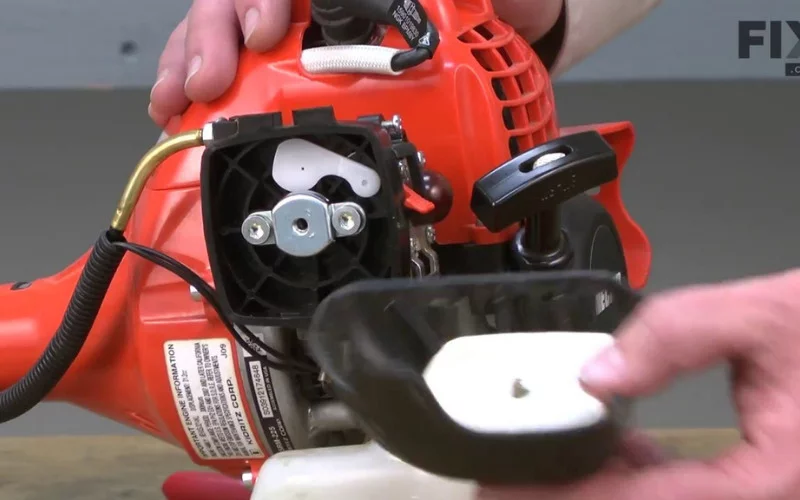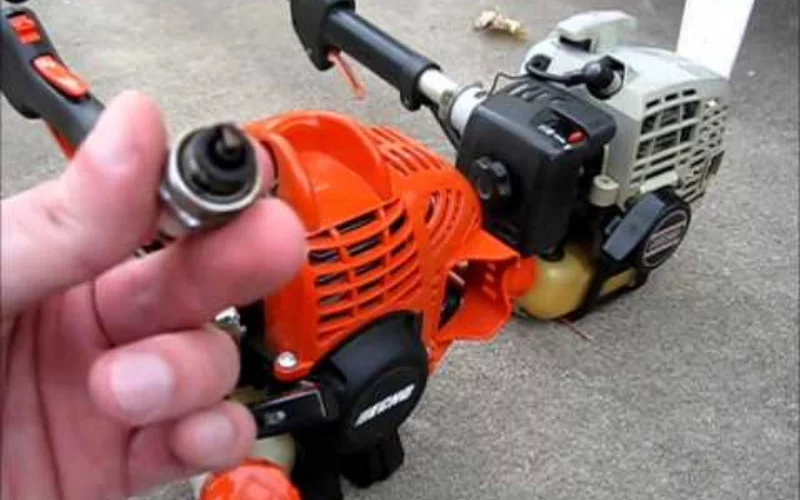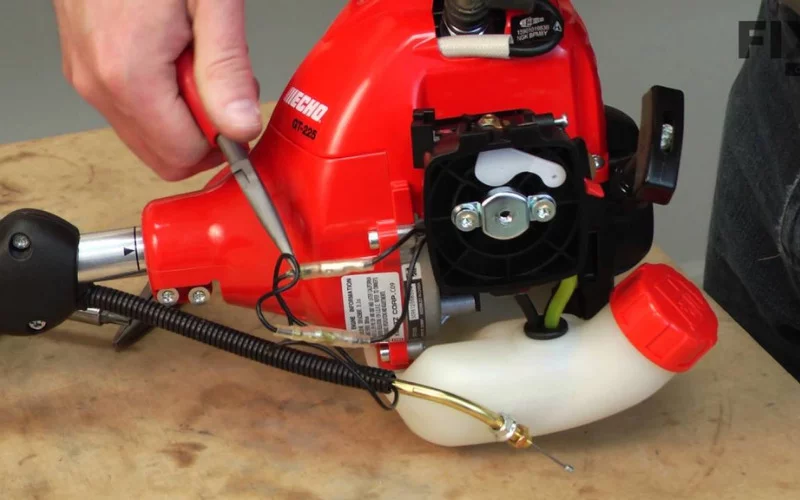It can be pretty frustrating to want to trim your lawn, only to bring out your Echo weed eater and then try to start it, and it doesn’t bulge.
This is a common problem you will encounter with all weed eaters, no matter the brand they are made of.
The good news is that you can try quite a few things by yourself in troubleshooting for the cause of the problem to see how you can fix it yourself.
These are very easy things that even no mechanically savvy people can do by themselves. Let’s dive straight into the issue of the day.
Why Is My Echo Weed Eater won’t Start
Weed eaters are tools used in gardening for removing weeds and other unwanted plants from your garden or lawn.
This tool uses a flexible monofilament line to trim these weeds, and hence they are also called string trimmers. They are valuable to let on any gardening arsenal that helps your lawn look good.
If your Echo weed eater is starting and then stopping abruptly, or if it doesn’t start at all, then you might have one or more of the following problems:
- Fuel Issues
- Carburetor Issues
- Fuel filter issues
- Spark plugs Problems
- Battery issues( peculiar to electric weed eaters)
- Other issues
Troubleshooting An Echo Weed Eater That Won’t Start

Here are some things you can check to detect what the problem with your Echo weed eater is and what you should do to take care of the problem:
Fuel Issues
Your weed eater is not starting probably because of a problem associated with the fuel; it could be either of the following issues.
1. Fuel Level
Your fuel tank could be empty, and hence there is no chemical energy to drive the machine so that it won’t start.
All you need to do is check the fuel tank and if it is empty, then refill it with high-quality fuel( ensure that you don’t let the fuel overfill, thank), then start the weed eater.
2. Fuel quality:
If you use low-quality gas, it can cause the machine not to start. Some gas might be adulterated with ethanol, or it might be mixed with water.
Ethanol mixed with gas is responsible for the damage of many engines; this damage is gradual until you wake up one day to see that your weed eater is faulty.
If your gas is mixed with ethanol, pour it out of the fuel tank and refill the tank with high-quality fuel. If the fuel had been sitting in the tank for months, then either pour the fuel away or add some fuel stabilizer to it.
Carburetor Issues
If the carburetor of your weed eater has developed a fault, it is common for the weed eater to start, and then it coughs” or die immediately without ever revving up to full throttle.
Remember that the carburetor is responsible for the fuel-to-air mixture balance in the engine.
There is an adjustment screw (in some cases, they are 2) with which you can adjust the mixture if the mixture has too much air and so is said to be lean, or when it has too much gas, in which case it is said to be too rich.
There are two ways the weed eater carburetor can be responsible for why your device is not starting:
1. The Carburetor is Clogged:
This is another common reason why your Echo weed eater will refuse to start. A clogged carburetor cannot deliver the right gas to the engine.
So if you add fresh gas to the weed eater and it doesn’t start, check the carburetor to see if grime or dirt is present, and use a toothpick or safety pin to remove them.
2. The Carburetor Is Faulty:
If your Echo weed eater does not have any problem with the fuel and the carburetor is not clogged, it is probably faulty. You will have to replace the carburetor immediately not to cause more damage to the weed eater.
Problems With The Fuel Filter
If the fuel filter of your Echo weed eater has an issue, it will stop the engine from starting. The fuel filter’s job is to keep debris and dirt away from reaching the engine to keep the engine from getting clogged.
If the fuel filter is not functioning well, remove it and replace it with a new one. People would pass the fuel filter because they do not want the hassle of fixing another one, but this is not a wise thing to do because you will only be clogging your carburetor, which means you will have to do it more frequently.
The Spark Arrestor Is Clogged
The spark arrestor of your Echo weed eater is a screen that prevents large particles from blowing out the exhaust to prevent any fire hazards, and so it must not be bypassed as some people do; they remove it if it is clogged. You should not try to bypass the spark arrestor because it is put there for your safety against fire.
A clogged arrestor will prevent the unit from starting since it cannot create an ignition spark due to dirt or debris (this part easily gets clogged because it is so close to the engine) and should be replaced.
Spark Plugs issues

If your Echo weed eater refuses to start, a fouled or worn-out spark plug is another common suspect.
You can troubleshoot by carefully taking the following steps( if you don’t feel you to it, you should take it to a professional for servicing)
1. Wear insulated gloves before you start.
2. Try locating the spark plugs and then removing the terminal’s insulated boot.
3. Use a spark plugs wrench to remove the spark plugs.
4. Then replace the insulated boot you removed earlier back on the terminal.
5. Then gently grind the side of the plugs against any metal part of the engine.
6. Without touching any metallic part of the weed eater ( you want any electric shocks), hold the plug in place by the insulated ground, then turn the engine as if you want to start it.
What will happen is that a small blue spark will appear between the electrode on the end of the plug if it is getting fire successfully. If not, it then means you have to change the spark plugs.
The Recoil Pulley Is Bad
The recoil pulley is an important part of weed eater because it helps in starting the engine; if the recoil pulley is faulty, it cannot create the right tension on the starter rope for starting the engine.
Hence the engine of your Echo weed eater will not start if the recoil pulley is bad. Your best bet will be to replace it,
Faulty Recoil Starter Assembly
The recoil starter assembly might not seem like an important part of the weed eater, but if it goes bad, the weed eater won’t start.
The recoil starter assembly helps turn the engine over when the starter cord is pulled.
If it is faulty, you will have to buy another one; failure to do so will lead to other issues with the engine that might be more technically expensive to fix.
The Rewind Spring Might be Broken
A broken Rewind Spring can be responsible for why your weed eater is not starting; this is because the rewind spring helps the starter cord to retract so that the engine can start. You should replace it if it is broken.
Low Oil Level
Something as simple as a low oil level in the engine can keep your weed eater from starting because inadequate can lead to bad compressions, and this bad compression can damage the starter cord. So always top up the oil in your Echo weed eater.
Dead Battery issues
You can only experience a dead battery keeping your weed eater from starting using an Echo electric weed eater.
A bad or low battery will not give enough voltage to the starter motor that turns the engine over, and hence your machine will not start.
You can remove the battery, connect another one, and then start it. If it starts, then it means you need to change the battery; if not, then you may have to change your starter motor.
How To Start The Echo Weed Eater
Follow the steps below if you just got an Echo weed eater and did not know how to start the machine.
1. Firstly, check the fuel tank to ensure that there is enough fuel; if not, add fresh, high-quality fuel to the tank.
2. Then, check the handle of the weed eater to locate the throttle control to adjust the engine’s speed; this will keep you from having to stop and readjust it when the engine is running.
3. Hold onto the weed eater, pull on the choke lever to close the choke, and then quickly pull the starter cord. If you don’t hold on to the weed eater firmly, it might jerk out of your hand. The engine will start if you pull hard enough.
4. Since the engine has started, then release slide the choke back over to the position it was before in other to release it. To achieve full speed, you can also release the throttle control.
FAQ
1. How much gas can an Echo weed eater hold?
The amount of gas an Echo weed eater can hold depends on the type. Different Echo weed eaters have different gas holding capacities, but by and large, the gas tank can hold about 20 ounces of gas which is more than enough to cut for about 2 hours without any need to refill. However, you can check the side of the fuel tank to know how much fuel your in-unit can hold.
2. What Is The Best Oil To Use For An Echo Weed Eater?
The Echo company recommends PowerBlendX oil to be used for their weed eaters. However, other two-cycle motor oil will work well with the weed eater.
3. Does It Take A Long Time To Get The Battery Of Echo Weed Eater Charged?
It will take about an hour to get your Echo weed eater battery fully charged; however, you can charge it for a shorter time if you want to use the weed eater in a hurry.
4. How Long Does The Echo Electric Weed Eater Battery Last?
The length of time your battery will last before it needs to be recharged will depend on the use speed. Typically, if the battery is fully charged, you expect to use it for about 30 minutes before you need to recharge it.
5. How Do I Reset My Battery Charger?
If your Echo battery is not properly connected to the weed eater, you will need to reset it. All you need to do is to first and foremost, disconnect the battery from the weed eater, then locate the power buttons and hold it down for about 8 seconds. Then release it and then put back the battery.
Conclusion
The Echo weed eater is a very reliable tool for keeping your lawn and garden free of weeds, but there are a few reasons that will cause the machine not to start when you want to use it.
It could be due to anything from the low fuel level or oil to the carburetor getting clogged. But whatever the case is, you can do very simple things by yourself to remedy the situation.
Troubleshoot using the points we listed above to try to fix the problem, but if you have tried everything and the weed eater still doesn’t start, it is time to visit a technician to look at it.
Helpful Links:
- Are Two Wheel Wheelbarrows Better?
- How To Cut Grass Without a Lawnmower
- Snowblower or Plow for Gravel Driveway – Which is Better?
- Ryobi Snow Blower vs Ego Snow Blower Reviews
- What Is The Most Efficient Sprinkler Head?
We trust this article helped you decipher Why Your Echo Weed Eater Won’t Start. You may also want to check If Two Wheel Wheelbarrows Better?
Thanks for taking the time to read our article, and we hope you find it helpful. Would you mind leaving a comment below if you have any suggestions?
Kindly reach out to people by sharing this post on social media.
If you liked this article, then please follow us on Facebook, Instagram, Twitter, and Pinterest.

